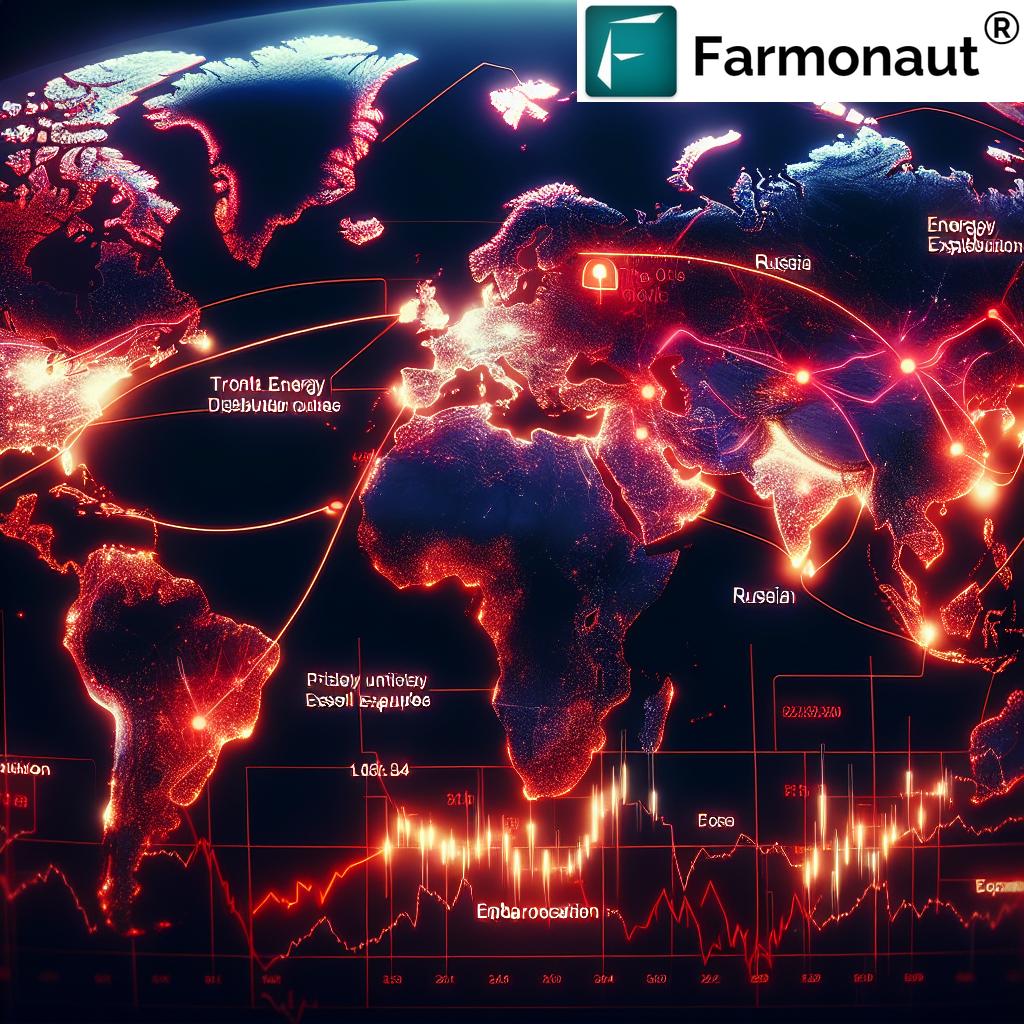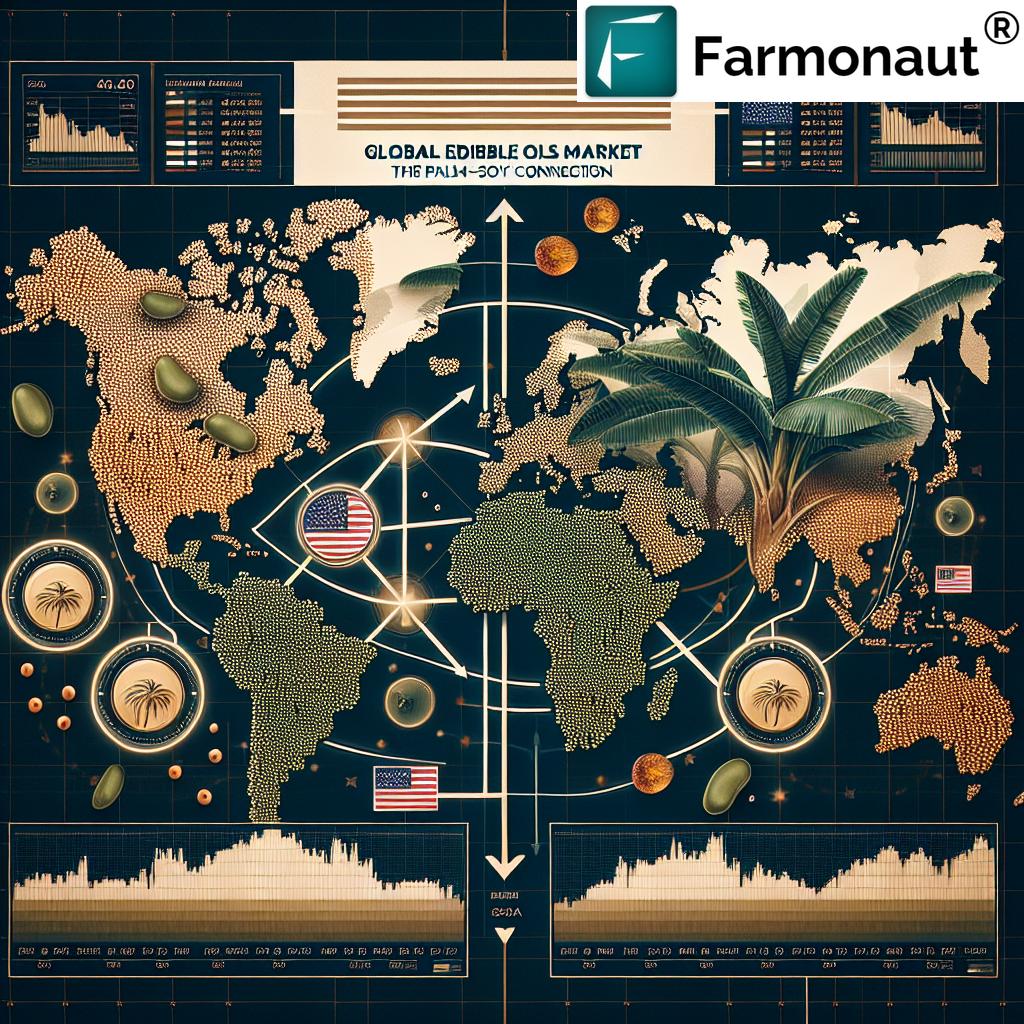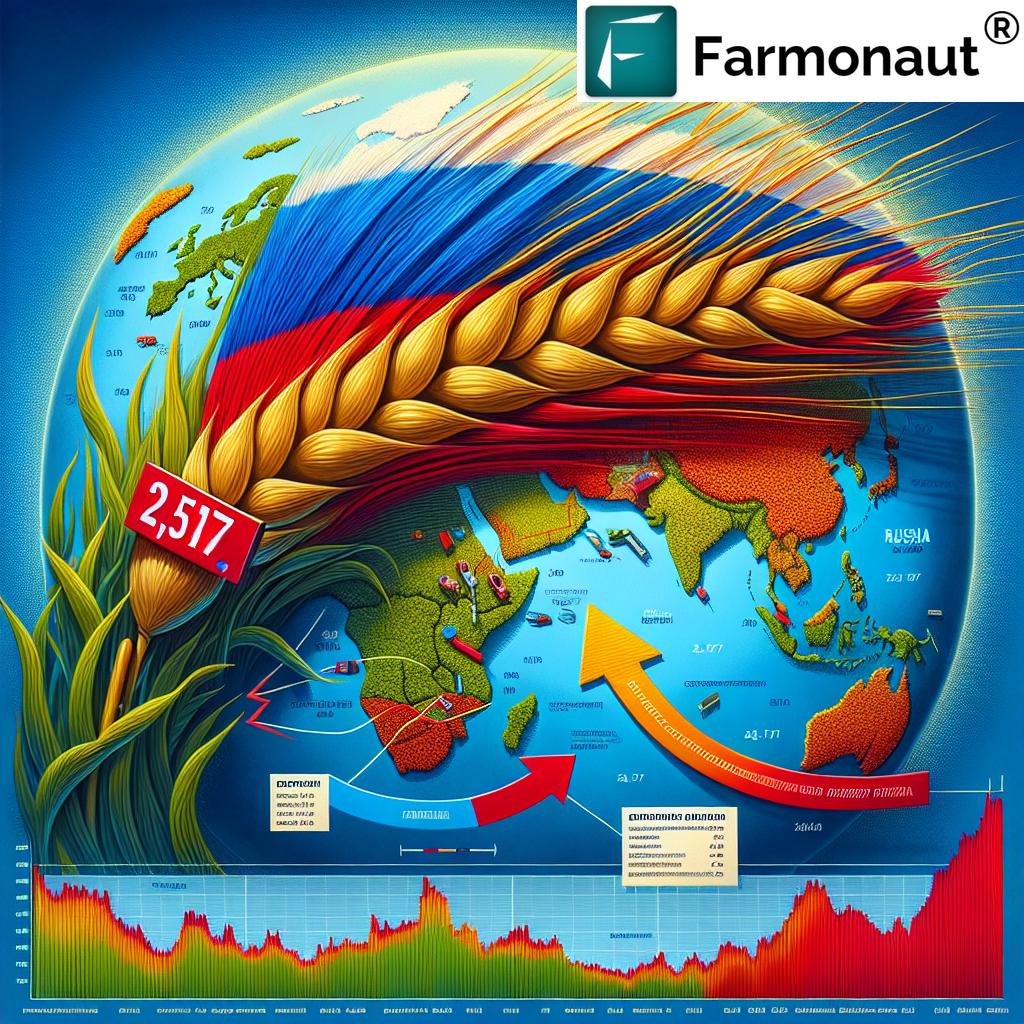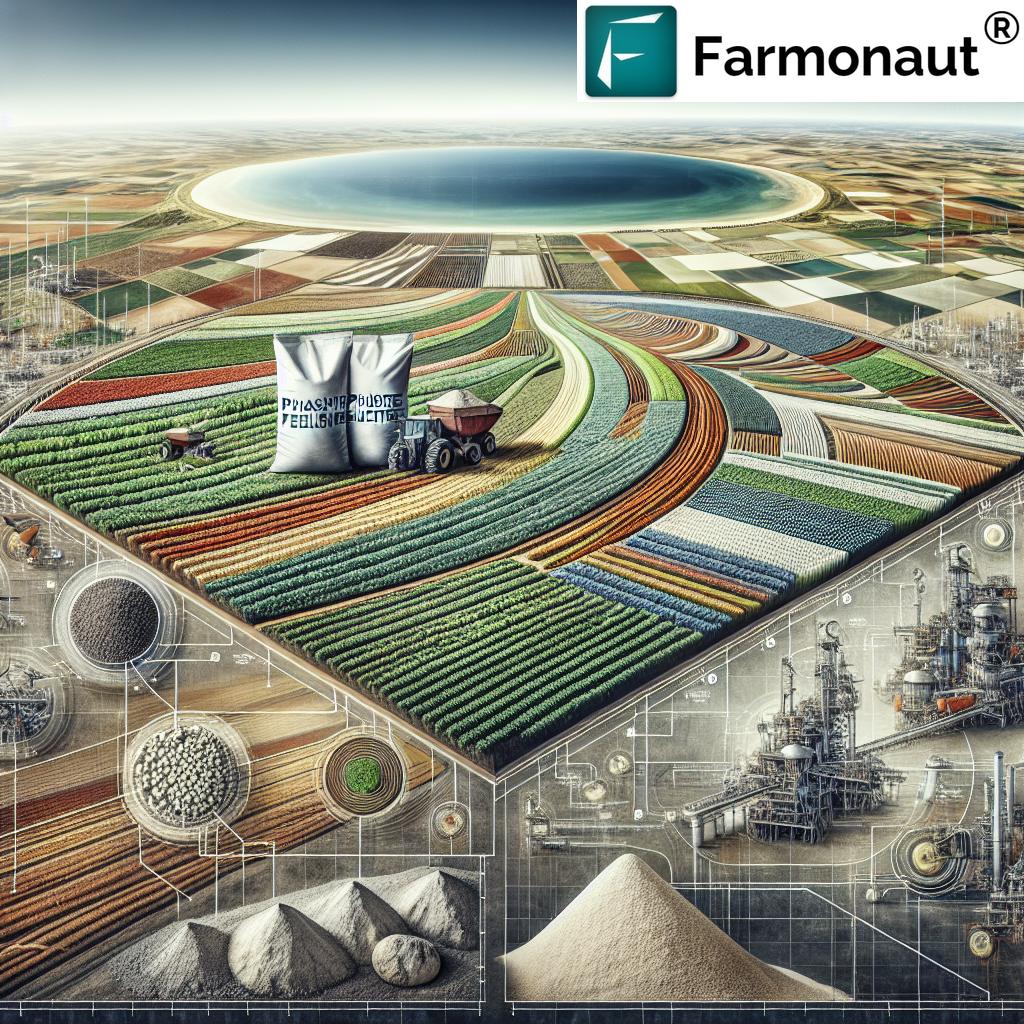Global Wheat and Corn Outlook: Weather Impacts on Crop Production and International Trade Forecasts
“Chicago wheat futures have shown an upward trend, influenced by global production forecasts and weather impacts on agriculture.”
In today’s rapidly evolving agricultural landscape, we at Farmonaut are closely monitoring the global wheat and corn outlook, with a keen focus on how weather patterns are shaping crop production and international trade forecasts. As experts in satellite-based farm management solutions, we understand the critical role that accurate, real-time data plays in navigating the complexities of the global grain market.
The agricultural sector is currently experiencing significant shifts, with Chicago wheat futures continuing their upward trajectory and weather impacts in South America influencing corn and soybean prices. In this comprehensive analysis, we’ll explore the intricate interplay between weather events, production forecasts, and trade policies, offering valuable insights into the current state and future prospects of the global grain market.
Global Wheat Production Forecast: A Delicate Balance
The global wheat production forecast for 2024/25 has recently been adjusted by the International Grains Council (IGC), reflecting the dynamic nature of agricultural markets. Let’s delve into the key factors influencing this forecast:
- Increased Production Estimate: The IGC has raised its forecast for global 2024/25 wheat production by 1 million metric tons to 797 million tons. This adjustment is primarily due to a larger expected crop in Kazakhstan.
- Weather Impacts: Winter wheat crop protection measures in the U.S. are under close scrutiny, with snow cover providing crucial insulation against cold temperatures. Recent reports suggest that most of the U.S. winter wheat crop has an adequate layer of snow, easing concerns about potential crop damage.
- Russian Exports: Despite being the biggest exporter, shipments from Russia are falling, and a restrictive government quota came into force this month, adding complexity to the market dynamics.
- Ukrainian Exports: Wheat exports from Ukraine have also declined, with traders expressing concern about the condition of crops in both Russia and Ukraine as they emerge from winter.
As we analyze these factors, it’s clear that the direction of wheat prices will largely depend on the export capabilities of Russia and Ukraine in the coming months.
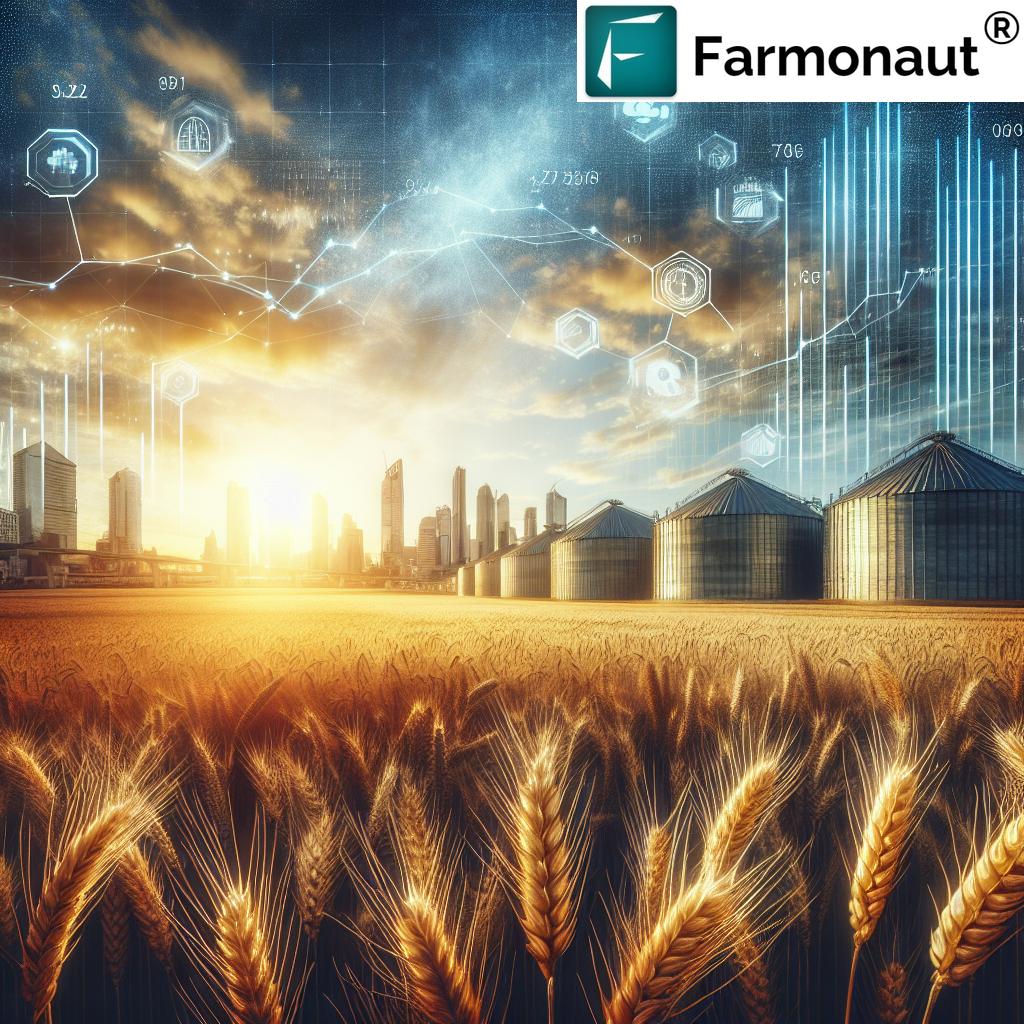
Corn and Soybean Market Trends: South America’s Weather Challenge
While wheat markets are adjusting to new production forecasts, the corn and soybean sectors are facing their own set of challenges, particularly in South America:
- Adverse Weather Conditions: Unfavorable weather patterns in South America are reducing crop outlooks for both corn and soybeans. This has led to an upward pressure on prices, with CBOT May corn and soybeans both showing weekly gains.
- Global Corn Production Estimates: The IGC has cut its estimates for global 2024/25 corn production by 3 million tons, reflecting the worsening crop prospects in South America.
- Soybean Output Reduction: Similarly, global soybean output estimates have been reduced by 2 million tons due to the challenging conditions in South American growing regions.
These adjustments in production estimates are having a significant impact on international grain trade, with market analysts expecting corn supply to tighten while soybeans are likely to remain relatively plentiful.
Weather Impact on Agriculture: A Closer Look
The influence of weather patterns on agricultural production cannot be overstated. As we at Farmonaut continue to provide advanced satellite-based farm management solutions, we’re acutely aware of how climate variations can shape crop outcomes:
- Winter Wheat Protection: In the U.S., the adequacy of snow cover for winter wheat is crucial. Recent USDA reports indicate that most winter wheat crops are well-protected against icy temperatures, with forecasts suggesting rising temperatures in the coming days.
- South American Challenges: Adverse weather conditions in South America are having a significant impact on corn and soybean production. These conditions are not only affecting current crops but also influencing planting decisions for upcoming seasons.
- Global Temperature Trends: As global temperatures continue to fluctuate, farmers and agricultural businesses must adapt their strategies to ensure crop resilience and maintain productivity.
At Farmonaut, our satellite-based crop health monitoring system provides real-time insights into these weather impacts, allowing farmers to make informed decisions about irrigation, fertilizer usage, and pest management. By leveraging our technology, agricultural stakeholders can better navigate the challenges posed by changing weather patterns.
International Grain Trade: Navigating Complex Market Dynamics
The global grain market is currently experiencing a period of significant flux, with various factors influencing trade patterns and price movements:
- Wheat Export Quotas: The implementation of wheat export quotas by major exporters, particularly Russia, is adding a layer of complexity to market dynamics. These quotas can significantly impact global supply and price stability.
- Shifting Trade Routes: As traditional export powerhouses face challenges, new opportunities may arise for other wheat-producing nations to increase their market share.
- Price Volatility: The combination of production uncertainties, export restrictions, and changing weather patterns is likely to contribute to ongoing price volatility in the grain markets.
For agricultural businesses navigating these complex trade dynamics, access to accurate, real-time data is crucial. Farmonaut’s AI-driven advisory system, Jeevn AI, provides personalized insights and expert crop management strategies that can help stakeholders make informed decisions in this volatile market environment.
“Global corn production estimates have been revised downward, reflecting challenges in key growing regions and affecting international grain trade.”
Commodity Market Trends: A Data-Driven Perspective
To better understand the current state of the global grain market, let’s examine some key commodity market trends:
- Chicago Wheat Futures: CBOT wheat futures have shown remarkable strength, with seven consecutive weekly gains. As of the latest data, the most-active wheat contract was trading at $6.02-1/4 a bushel, up 0.3% and poised for a 0.4% weekly gain.
- Corn Futures: CBOT May corn has also seen positive movement, rising 0.2% to $5.13-1/2 a bushel and set for a 0.8% weekly gain, its third in a row.
- Soybean Futures: May soybeans climbed 0.3% to $10.65-1/2 bushel, up around 1.2% for the week.
These price movements reflect the market’s response to the evolving production forecasts and trade dynamics we’ve discussed. For agricultural businesses and traders, staying ahead of these trends is essential for making strategic decisions.
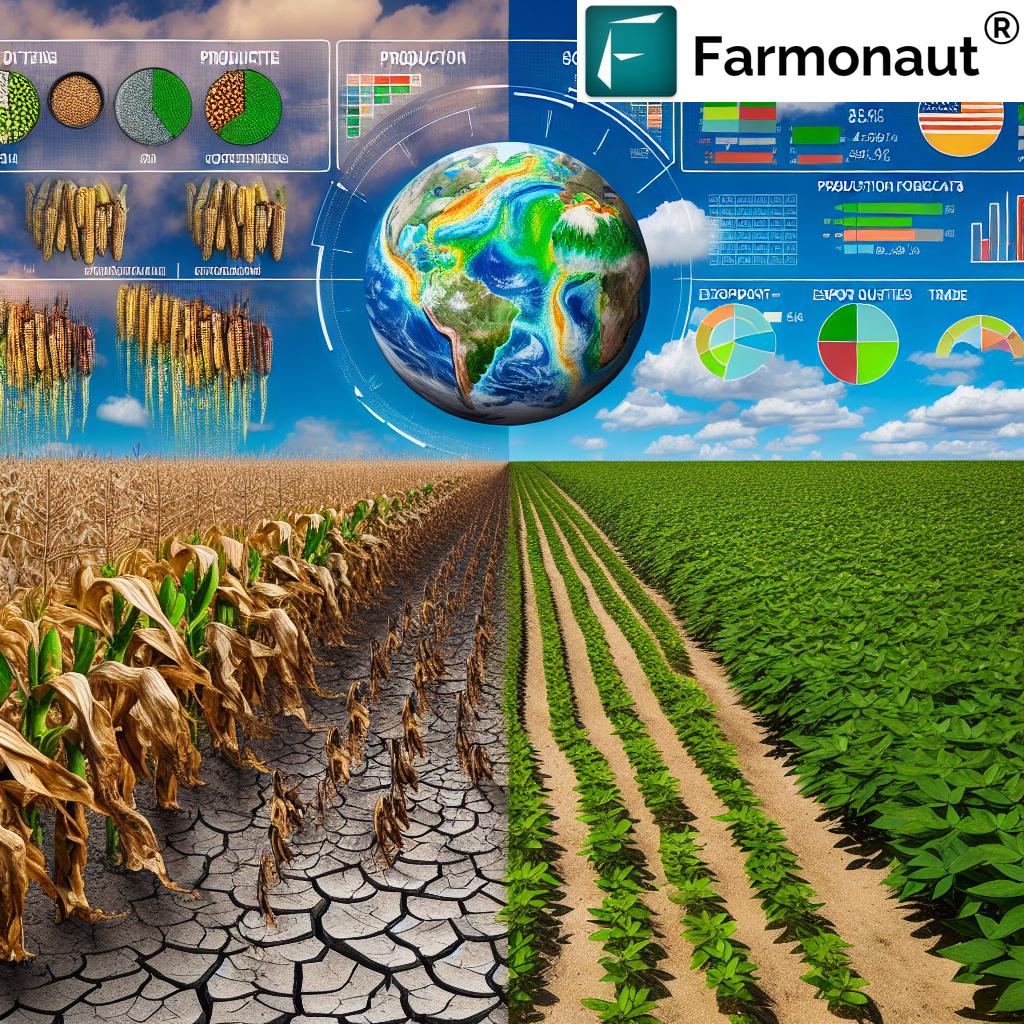
Global Grain Production and Trade Forecast Comparison
| Grain Type | Major Producing Regions | Current Production Estimate (million metric tons) | Year-over-Year Change (%) | Weather Impact Assessment | Export Forecast (million metric tons) | Price Trend |
|---|---|---|---|---|---|---|
| Wheat | United States | 797 | +0.13% | Neutral | 210 | Increasing |
| Wheat | European Union | 135 | -2.17% | Negative | 32 | Stable |
| Wheat | Russia | 85 | -5.56% | Negative | 45 | Increasing |
| Corn | United States | 383 | +1.32% | Positive | 52 | Increasing |
| Corn | China | 290 | +0.69% | Neutral | 1 | Stable |
| Corn | South America | 175 | -2.78% | Negative | 78 | Increasing |
This comprehensive table provides a clear overview of the current global grain market, highlighting the intricate relationships between production estimates, weather conditions, and trade forecasts across major producing regions.
Leveraging Technology for Agricultural Insights
In an era where data-driven decision-making is crucial, Farmonaut’s advanced technologies offer valuable solutions for navigating the complexities of the global grain market:
- Satellite-Based Crop Health Monitoring: Our platform utilizes multispectral satellite images to provide real-time insights into crop health, soil moisture levels, and other critical metrics. This technology is particularly valuable for assessing the impact of weather events on crop production.
- AI-Driven Advisory System: Jeevn AI, our personalized farm advisory tool, analyzes satellite data and other inputs to generate customized advice, helping farmers and agribusinesses optimize their operations in response to market trends and weather conditions.
- Blockchain-Based Traceability: For businesses involved in the international grain trade, our blockchain technology ensures transparency and security throughout the supply chain, enhancing trust and reducing fraud risks.
By integrating these technologies into their operations, agricultural stakeholders can gain a competitive edge in understanding and responding to market dynamics.
The Role of Precision Agriculture in Global Food Security
As we navigate the challenges presented by fluctuating weather patterns and changing market dynamics, the importance of precision agriculture becomes increasingly apparent. Farmonaut’s mission to make precision agriculture affordable and accessible to farmers worldwide is more relevant than ever:
- Resource Optimization: By providing detailed insights into crop health and soil conditions, our technology helps farmers optimize their use of water, fertilizers, and pesticides, contributing to more sustainable and efficient agricultural practices.
- Risk Mitigation: Real-time monitoring and AI-driven insights enable farmers and agribusinesses to quickly identify and respond to potential threats, such as adverse weather conditions or pest infestations.
- Yield Improvement: Through data-driven decision-making, farmers can make informed choices about planting, harvesting, and crop management, potentially leading to improved yields and better quality produce.
By embracing these technologies, we can work towards a more resilient and productive global agricultural system, better equipped to meet the challenges of feeding a growing world population in the face of climate change and market volatility.
Looking Ahead: Future Trends in Global Grain Markets
As we look to the future of global grain markets, several key trends are likely to shape the landscape:
- Climate Resilience: With increasing weather variability, developing climate-resilient crop varieties and farming practices will become crucial for maintaining stable production levels.
- Technological Integration: The adoption of advanced technologies like satellite monitoring, AI, and blockchain is expected to accelerate, providing farmers and traders with more accurate and timely information.
- Sustainable Practices: There will likely be a growing emphasis on sustainable agriculture practices to meet both environmental concerns and market demands for responsibly produced grains.
- Diversification of Trade Routes: As geopolitical factors continue to influence trade patterns, we may see a diversification of grain trade routes and the emergence of new major players in the global market.
At Farmonaut, we’re committed to staying at the forefront of these trends, continually evolving our technologies to meet the changing needs of the agricultural sector.
Conclusion: Navigating Complexity with Data-Driven Insights
The global wheat and corn outlook presents a complex picture, with weather impacts, production forecasts, and trade policies all playing crucial roles in shaping market dynamics. As we’ve explored in this analysis, staying informed and leveraging advanced technologies are key to navigating these challenges successfully.
Farmonaut’s suite of tools, from satellite-based crop monitoring to AI-driven advisory systems, offers valuable solutions for farmers, agribusinesses, and policymakers alike. By embracing these technologies and staying attuned to market trends, stakeholders in the agricultural sector can make more informed decisions, optimize their operations, and contribute to a more resilient global food system.
As we move forward, the ability to quickly adapt to changing conditions and make data-driven decisions will be crucial in ensuring food security and sustainable agricultural practices worldwide. At Farmonaut, we’re proud to be at the forefront of this technological revolution in agriculture, providing the tools and insights needed to thrive in an ever-changing global market.
FAQs
- How does weather impact global wheat and corn production?
Weather significantly influences crop yields, with factors like temperature, precipitation, and extreme events affecting plant growth and development. Adverse weather can lead to reduced production estimates and increased market volatility. - What role do export quotas play in the international grain trade?
Export quotas, such as those implemented by Russia, can limit the supply of grains in the global market, potentially leading to price increases and shifts in trade patterns as buyers seek alternative sources. - How can farmers use satellite-based crop monitoring to improve their yields?
Satellite-based monitoring provides real-time data on crop health, soil moisture, and other critical factors, allowing farmers to make timely decisions on irrigation, fertilization, and pest management, ultimately optimizing yields. - What are the main factors influencing current wheat and corn prices?
Key factors include global production forecasts, weather impacts on major growing regions, export policies of major producers, and overall supply and demand dynamics in the international market. - How does Farmonaut’s technology contribute to sustainable agriculture?
Farmonaut’s precision agriculture tools help optimize resource use, reduce waste, and improve crop management, leading to more sustainable farming practices and potentially reducing the environmental impact of agriculture.
Earn With Farmonaut: Affiliate Program
Earn 20% recurring commission with Farmonaut’s affiliate program by sharing your promo code and helping farmers save 10%. Onboard 10 Elite farmers monthly to earn a minimum of $148,000 annually—start now and grow your income!
Farmonaut Subscriptions
For more information on our API services, please visit our API page and check out our API Developer Docs.









